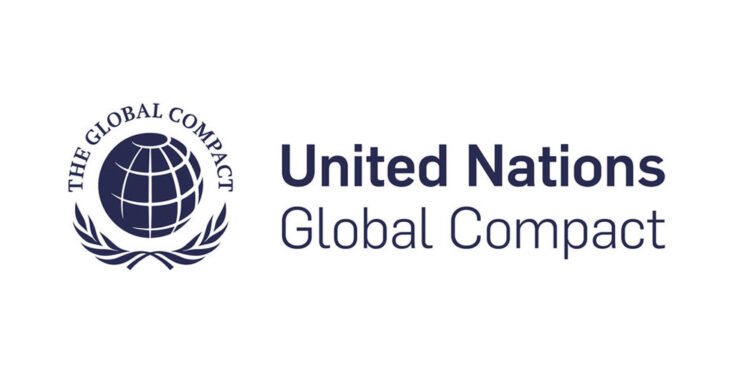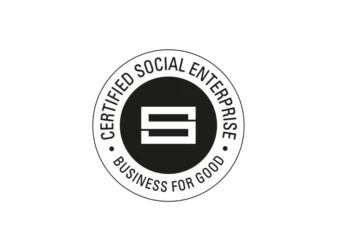What if the world’s largest corporate sustainability initiative could transform your business while making a positive global impact?
This question lies at the heart of the United Nations framework that brings together over 20,000 participants across 167 countries. The global compact represents a powerful movement toward responsible business practices.
This comprehensive guide will help you understand this voluntary pact. You’ll learn how companies adopt sustainable and socially responsible policies.
The framework connects business operations with broader sustainable development goals. It provides essential support for organizations across every sector.
We’ll explore the Ten Principles that form the foundation of this commitment. You’ll discover implementation strategies that drive real progress.
Key Takeaways
- The UN Global Compact is the world’s largest corporate sustainability initiative
- Over 20,000 participants across 167+ countries participate in this framework
- It’s a voluntary, non-binding pact encouraging sustainable business practices
- The initiative connects directly with broader sustainable development goals
- Companies receive guidance on implementing socially responsible policies
- Participants commit to principles covering human rights, labor, environment, and anti-corruption
- The framework helps organizations understand progress reporting requirements
Introducing the World’s Largest Corporate Sustainability Initiative
Imagine a corporate network so vast it connects over 20,000 organizations across 167 countries through shared sustainability values. This initiative represents the pinnacle of corporate responsibility efforts worldwide.
Participants span multinational corporations, small and medium enterprises, and diverse sectors. Non-profits, academic institutions, and even cities join this collective movement.
The framework operates through both a central coordinating agency and country-specific networks. Local networks adapt global principles to national contexts and cultural nuances.
Since its 2000 launch, participation has grown exponentially. The initiative now represents the most comprehensive corporate sustainability effort ever attempted.
This collaborative platform brings together companies with labor groups and civil society organizations. This unique partnership model fosters meaningful dialogue and practical solutions.
Ongoing commitment requires regular progress reporting from all participants. This accountability mechanism ensures continuous improvement and transparency.
The massive scale creates unprecedented potential for collective action. When thousands of organizations align their efforts, they can address sustainability challenges more effectively than any single entity.
This initiative demonstrates how business can drive positive change while maintaining profitability. The framework shows that responsibility and success can work together.
What is the UN Global Compact?
Business leaders worldwide are embracing a transformative initiative that redefines the relationship between profit and purpose. This framework represents a voluntary commitment to ethical business practices that benefit both companies and communities.
Core Mission and Founding Vision
The core mission focuses on integrating universal principles into business operations globally. This approach supports broader development objectives while creating sustainable value.
Former UN Secretary-General Kofi Annan introduced this vision at the 1999 World Economic Forum. He proposed a new corporate citizenship model that would unite business with universal values.
The framework operates through voluntary commitment rather than regulation. Companies choose to adopt responsible policies and report on their implementation progress.
This initiative specifically targets CEOs and top executives for commitment. Leadership engagement ensures sustainability becomes embedded in corporate strategy.
Global Participation and Network Structure
The organizational structure includes a central coordinating body and country-specific networks. Local networks adapt global standards to national contexts and cultural differences.
Various organizations can participate in this initiative. Businesses, non-profits, academic institutions, and even cities join this collective effort.
Participants receive comprehensive support services. These include training programs, peer networking opportunities, and practical implementation frameworks.
The learning model emphasizes guidance over punishment. This approach encourages continuous improvement rather than enforcing compliance.
Regular progress reporting ensures transparency and accountability. All participants must communicate their sustainability efforts annually.
This unique structure enables global principles to work effectively in local contexts. The network approach facilitates meaningful adaptation and implementation.
The Foundation: The Ten Principles of the UN Global Compact
At the heart of this initiative lies a powerful framework that guides corporate behavior toward greater responsibility. These ten principles serve as the ethical compass for thousands of organizations worldwide.
This comprehensive set draws from major international agreements that shape modern business ethics. They cover four critical areas that define responsible corporate citizenship.
Human Rights: Principles 1 & 2
Every company must support and respect internationally recognized human rights. This means actively protecting these rights within their sphere of influence.
Businesses must ensure they never become involved in human rights abuses. This requires careful monitoring of operations and partnerships.
Labor Standards: Principles 3, 4, 5 & 6
Companies should uphold freedom of association and collective bargaining rights. Workers deserve fair representation in workplace decisions.
Forced labor must be eliminated from all operations and supply chains. Child labor has no place in responsible business practices.
Employment discrimination based on any grounds must be actively prevented. Equal opportunity should guide all hiring and promotion decisions.
Environmental Stewardship: Principles 7, 8 & 9
Businesses should support a precautionary approach to environmental challenges. This means acting before scientific certainty when risks appear serious.
Companies must promote greater environmental responsibility throughout their operations. Sustainable practices should become standard procedure.
Environmentally friendly technologies should be encouraged and developed. Innovation drives progress toward cleaner operations.
Anti-Corruption: Principle 10
All forms of corruption, including extortion and bribery, must be actively opposed. Transparent business practices build trust with stakeholders.
This principle completes the framework, added in 2004 to address growing concerns about corporate ethics. It represents the evolution of responsible business expectations.
These principles align directly with broader sustainable development goals. They provide practical guidance for companies seeking meaningful social responsibility.
Implementation varies by company size and sector, but the commitment remains universal. Thousands of organizations have integrated these standards into their core operations.
This framework represents the most comprehensive approach to corporate responsibility available today. It guides businesses toward practices that benefit both society and their bottom line.
The History and Evolution of the Global Compact
Every great movement begins with a visionary moment that captures the world’s attention. The journey of corporate sustainability took a monumental leap forward through a series of strategic developments that shaped modern business responsibility.
Announcement at the World Economic Forum and Official Launch
January 1999 marked a turning point in corporate responsibility history. United Nations Secretary-General Kofi Annan stood before world leaders at Davos with a bold proposal.
He challenged business leaders to join a new kind of international partnership. This partnership would align market forces with universal principles for a better world.
The official launch followed on July 26, 2000, at New York headquarters. Fifty companies and several civil society organizations joined this groundbreaking initiative from day one.
This launch represented the first formal commitment mechanism connecting businesses with development goals. It created a new pathway for corporate engagement with global challenges.
Key Leadership Summits and Milestones
The initiative’s growth accelerated through landmark gatherings of business leaders. The first Leadership Summit in 2004 brought together hundreds of committed organizations.
This summit witnessed the addition of the tenth principle against corruption. The framework expanded from nine to ten core principles that year.
Subsequent summits in 2007 and 2010 reinforced the growing movement. The 2010 gathering celebrated ten years of progress with thousands of participants.
These events showcased real-world examples of principle implementation. They demonstrated how companies could drive positive change while maintaining profitability.
The initiative’s focus evolved alongside global development priorities. Early support for Millennium Development Goals transitioned to Sustainable Development Goals after 2015.
Specialized programs emerged to address specific challenges. The Cities Programme helped urban centers adopt sustainable practices.
Finance initiatives engaged the investment community directly. These efforts brought sustainable thinking into capital markets and investment decisions.
Local networks expanded across continents, adapting global principles to regional contexts. This growth demonstrated the framework’s flexibility and universal appeal.
From its modest beginnings, participation has grown to over twenty thousand organizations today. This expansion shows the enduring relevance of its core mission.
The framework continues evolving while maintaining its foundational principles. It addresses emerging challenges while staying true to its original vision.
How the Initiative Operates: A Non-Binding Framework for Change
Corporate sustainability thrives through voluntary action rather than enforced compliance. This framework operates as a guiding force rather than a regulatory body.
Companies choose to participate based on shared values and long-term vision. The approach focuses on encouragement rather than punishment.
The “Guide Dog” Approach: Facilitation Over Regulation
This initiative describes itself as “the guide dogs, not the watchdogs.” This philosophy emphasizes support and resources over enforcement.
The framework provides multiple facilitation channels for participants. Policy dialogues bring together diverse stakeholders for meaningful conversations.
Learning programs help businesses understand responsible practices. Networking opportunities connect companies with peers facing similar challenges.
Project support helps organizations implement sustainability in practical ways. This comprehensive assistance makes implementation achievable for all participants.
The initiative creates practical resources and implementation guides. These materials help companies translate principles into daily operations.
The Role of Local Networks Around the World
Approximately 85 Local Networks adapt global principles to national contexts. These networks serve as vital contact points for signatories in their countries.
Local Networks operate with independence while coordinating with headquarters. This balance ensures both local relevance and global consistency.
Successful networks in Australia, Germany, Spain, and India demonstrate this model. Each adapts the framework to its unique cultural and regulatory environment.
The network approach enables valuable peer learning and best practice sharing. Companies benefit from collective wisdom and shared experiences.
This flexibility allows businesses to implement principles in ways that make sense locally. The framework respects different economic conditions and cultural values.
Local Networks foster collective action on regional sustainability challenges. They create powerful platforms for coordinated progress.
How Your Organization Can Join the UN Global Compact
Joining the world’s largest corporate responsibility platform requires understanding specific eligibility criteria and application steps. This initiative welcomes diverse organizations committed to sustainable practices.
Both business and non-business entities can participate in this framework. Each category follows slightly different requirements and reporting procedures.
Eligibility: Business vs. Non-Business Applications
Business applicants include companies with 250+ employees and state-owned enterprises. These organizations must demonstrate active operations and commitment to the ten principles.
Small and medium enterprises with fewer than 250 employees also qualify. They need at least one employee and ongoing business activities.
Non-business applicants encompass academic institutions and civil society organizations. Cities, labor groups, and public sector entities also participate.
Business associations, foundations, and CSR organizations complete the non-business category. This inclusive approach encourages broad participation across sectors.
Step-by-Step Guide to the Application Process
The application process involves three straightforward steps. First, review the official guidelines available on the initiative’s website.
Next, prepare a Letter of Commitment signed by your highest-level executive. This letter must be addressed to the United Nations Secretary-General.
Ensure the signing executive’s name matches the registration form exactly. This consistency prevents processing delays.
Finally, complete the online application form and upload your signed letter. The digital platform makes submission convenient for global applicants.
Local networks provide valuable support throughout this process. They offer guidance tailored to regional contexts and requirements.
Understanding Communication on Progress Requirements
Business applicants must submit annual Communications on Progress reports. These documents detail implementation of the ten principles.
Non-business participants submit Communications on Engagement every two years. These reports focus on their participation activities and support.
Reporting ensures transparency and accountability across all signatories. It demonstrates genuine commitment to sustainable development goals.
The framework provides extensive resources to help with reporting requirements. These tools make compliance manageable for organizations of all sizes.
This reporting mechanism strengthens the initiative’s credibility. It shows real progress toward human rights, labor, and environmental objectives.
Implementing the Principles and Aligning with the SDGs
Successful integration transforms corporate responsibility from concept to daily practice. Companies embed sustainability into their core operations through systematic approaches.
This alignment creates meaningful connections between business strategy and broader development objectives. Organizations find practical ways to contribute to global progress.
Integrating the Ten Principles into Corporate Strategy
Companies begin by conducting thorough gap analyses. These assessments identify areas where current practices fall short of principle requirements.
Leadership commitment drives successful integration. Executives must champion these values throughout the organization.
Embedding principles into governance structures ensures lasting impact. Board committees often oversee sustainability implementation.
Risk management systems incorporate human rights and environmental considerations. Decision-making processes reflect labour standards and anti-corruption measures.
Stakeholder engagement helps identify priority areas for action. Customers, employees, and communities provide valuable input.
Action plans establish clear targets and responsibilities. Timelines keep implementation efforts on track toward meaningful progress.
Tools for Action: The SDG Compass and Other Resources
The SDG Compass guides companies toward alignment with sustainable development goals. Developed with GRI and WBSCD, this tool helps organizations find their role.
This comprehensive resource provides five steps for implementation. Companies learn to define priorities, measure progress, and report results.
The Blueprint for Corporate Sustainability Leadership establishes excellence criteria. It connects principle implementation with development objective support.
Materiality assessments help businesses identify sustainability priorities. These tools focus efforts where they create the most value.
Reporting frameworks demonstrate accountability to stakeholders. Clear communication shows genuine commitment to social responsibility.
Innovation opportunities emerge through principle implementation. Companies discover competitive advantages while mitigating risks.
These resources support the private sector’s participation in global initiatives. They make sustainable development achievable for businesses of all sizes.
The UN Global Compact’s Role in Modern Finance and ESG
Financial markets are increasingly recognizing that sustainable business practices drive long-term value creation. This initiative connects corporate responsibility with investment decisions through specialized finance programs.
Several key initiatives bridge sustainability commitments with capital markets. These programs help companies demonstrate their value to investors.
Finance Initiatives: The CFO Coalition and Global Compact 100
The UN Alliance for SDG Finance brings together multiple organizations to mobilize private capital. This collaboration includes environmental and investment-focused partners.
The CFO Coalition engages financial leaders in sustainability integration. Chief Financial Officers learn to connect financial strategy with development objectives.
The Value Driver Model helps companies assess sustainability’s financial impact. This tool demonstrates how responsible practices create business value.
The Global Compact 100 stock index showcases leadership in principle implementation. This index tracks companies demonstrating exceptional commitment.
The Sustainable Stock Exchanges Initiative facilitates dialogue between market participants. Exchanges, investors and regulators collaborate on sustainability standards.
The Principles for Responsible Investment guide sustainable investment decisions worldwide. Founded in 2006, this framework helps investors integrate ESG factors.
Using the Framework for ESG Strategy and Sustainable Investment
Companies use this initiative to develop and communicate their ESG strategies. The framework provides clear standards for sustainability performance.
Investors increasingly use participation as a sustainability indicator. Alignment demonstrates serious commitment to risk management and long-term thinking.
Market expectations continue growing for corporate sustainability participation. Investors seek companies that understand their broader responsibilities.
Finance initiatives help translate sustainability commitments into investment decisions. They create practical pathways from principle to practice.
This approach helps bridge the gap between aspiration and implementation. Companies gain tools to make their sustainability efforts financially meaningful.
The private sector’s role in achieving development goals continues expanding. Financial markets play a crucial part in this collective effort.
Conclusion: The Enduring Impact of Corporate Citizenship
Corporate citizenship has evolved from a niche concept to a global movement for positive change. The world’s largest sustainability initiative continues to guide businesses toward responsible practices.
The Ten Principles provide a timeless framework addressing human rights, labor standards, environmental protection, and anti-corruption. These guidelines help companies navigate complex challenges while creating shared value.
Local networks adapt these universal standards to regional contexts, ensuring relevance across diverse markets. This flexibility has proven essential for widespread adoption and implementation.
Organizations that embrace this framework position themselves for long-term success while contributing to sustainable development goals. The voluntary approach fosters genuine commitment rather than mere compliance.
Looking ahead, corporate responsibility will remain crucial for addressing climate change, inequality, and other pressing issues. This initiative offers a proven pathway for businesses seeking to make meaningful progress.
Join this growing community of organizations committed to building a better world through responsible business practices.
FAQ
What is the primary goal of this corporate sustainability initiative?
The primary goal is to mobilize a global movement of sustainable companies and stakeholders to create a better world. It encourages businesses to align their operations and strategies with universal principles on human rights, labor, environment, and anti-corruption.
Is participation in the initiative legally binding for companies?
No, participation is entirely voluntary and non-binding. It operates as a leadership platform and a practical framework for companies to adopt sustainable and socially responsible policies, rather than a regulatory instrument.
Who is eligible to join this initiative?
Businesses of all sizes and sectors from anywhere in the world are eligible to join. Non-business entities, such as cities through the Cities Programme, academic institutions, and civil society organizations, can also participate in specific programs.
What are the “Communication on Progress” (COP) requirements?
A Communication on Progress is an annual public report to stakeholders. In it, a company describes its efforts to implement the Ten Principles. It is a requirement for maintaining active participant status and demonstrates transparency and commitment.
How does this initiative relate to the Sustainable Development Goals (SDGs)?
The initiative is a primary platform for business engagement with the SDGs. It provides companies with tools, like the SDG Compass, to align their strategies with the goals and measure their contributions to the 2030 Agenda for Sustainable Development.
What kind of support do participants receive after joining?
Participants gain access to a vast global network, including local networks in over 60 countries. They receive guidance, resources, webinars, and opportunities for collaboration to help them integrate the principles into their core business strategy.





